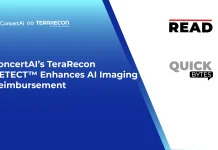Exiger, a supply-chain artificial intelligence (AI) specialist, and Palantir Technologies, a data-platform and decision-intelligence leader, announced a strategic collaboration to support the U.S. Army Materiel Command (AMC) in accelerating defence acquisition and operational readiness. The partnership combines Palantir’s operative platform capabilities with Exiger’s mission-built supply-chain AI to help the Army manage multi-tier supply-chain risk, readiness and sustainment for combat systems.
Under the agreement, Exiger’s “1Exiger” platform will be licensed by the Army – integrated into AMC’s environments including Weapon System 360 and Vantage – to illuminate, orchestrate and monitor a complex supply chain across ground combat systems, aviation, fires and munitions, air & missile, and communications. Palantir’s operating system will provide the data‐fusion, decision-making backbone. The result: enhanced visibility into supplier behaviour, production decisions aligned with battlefield demands, and an ability to respond faster to disruptions.
As Mike Gallagher, Palantir’s Head of Defence, put it: “America’s warfighters cannot afford blind spots or single points of failure – not on the battlefield and not in the supply chain.”
Why This Matters for the Defence Industry
1. Supply-chain visibility & risk mitigation
In modern operations, the effectiveness of the defence industrial base hinges not just on the hardware, but on the complex web of suppliers, sub-tiers and manufacturing readiness. By combining Exiger’s supply-chain AI with Palantir’s data-intelligence platform, this partnership addresses one of the most critical vulnerabilities of defence acquisition: lack of real-time, multi-tier visibility into the supply chain. The Army aims to reduce production lead times, improve supplier selection and accelerate manufacturing even in contested environments.
2. Faster acquisition & readiness
The integration promises to align battlefield needs with production and sourcing decisions in near-real time. This means assets and munitions can be produced and delivered more swiftly, increasing operational readiness. For the defence industry, where long lead-times and supplier delays are perennial pain points, this represents a significant shift toward more agile acquisition models.
Also Read: GlobalFoundries and BAE Systems Partner on Space Chip Technology
3. Digital transformation of defence industry base
The collaboration drives a deeper push into data-driven defence supply-chains. AI, analytics, and real-time decision platforms take the place of manual tracking. They also replace separate systems and siloed data. Defence contractors, from primes to sub-tiers, need to use advanced digital tools. They should connect with partners like Exiger and Palantir to stay competitive.
4. Changing supplier expectations
Suppliers to the defence sector now face evolving expectations. They must provide not only parts and systems, but also digital visibility, risk data and responsiveness. This trend could help firms that invest in advanced analytics and supply-chain tech. It might set a higher standard for others.
Implications for Businesses Operating in the Defence Ecosystem
Prime contractors who work with AMC (and other services) may need to integrate Palantir/Exiger platforms into their supply-network workflows. This may involve upgrading systems, sharing data and aligning with new procurement transparency expectations.
Tier-2/3 suppliers: Smaller parts suppliers may face increased scrutiny, risk-monitoring and requirements for digital supply chain readiness. Those that adapt early to provide data and analytics might gain advantage.
Technology providers: Vendors offering analytics, AI, supply-chain platforms, digital twin or manufacturing-execution systems could see increased opportunity. The trend toward “digitised defence commerce” opens up new business models.
Resilience & security firms: May grow as the defense sector upgrades its base. Supply-chain risks drive this demand. These include adversarial sourcing, exposure to intellectual property, and disruptions in manufacturing.
Operational readiness services: Aligning production with battlefield needs means tracking readiness. It also involves analyzing munitions and asset lifecycles. Supporting predictive sustainment will be more important.
Challenges & Considerations
While there are promising opportunities, we must address several risks and considerations:
Data Integration & Interoperability: Defence supply chains often involve outdated systems, silos, and subcontractors. Integrating Exiger’s platform with Palantir’s data engine will require significant effort. We need clear data standards. We must ensure good governance and manage any changes that come up.
Change Management & Workforce Readiness: Contractors and suppliers must adjust to new workflows. Resistance to change, training requirements, and entrenched practices could impede progress.
Security & Sensitive Data Governance: With more data sharing and AI use, protecting classified and sensitive data is crucial. This will help ensure compliance with export controls and maintain data protection.
Cost-Benefit and Adoption Speed: Defence procurement can be slow. It may take time to see the expected efficiency gains. Continued commitment from stakeholders will be crucial.
Conclusion
Exiger and Palantir’s partnership with the U.S. Army Materiel Command is a major step. This move pushes the defense industry toward digital and AI-driven supply chains. This collaboration shows that agility in supply chains is key. Using data for decisions and aligning with operational needs are also vital for success.
Defence companies should pay attention. Firms using advanced analytics and better supply chain visibility adapt more easily to changes in procurement. Also, those using real-time decision-making tools will be even more prepared.. The wider defense community sees digital supply chain platforms as key for staying ready and competitive in the future.




